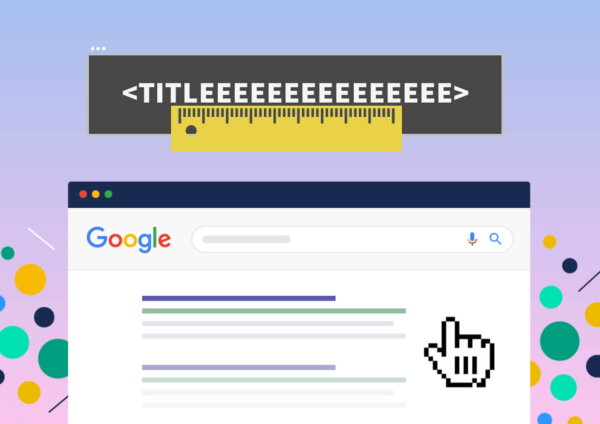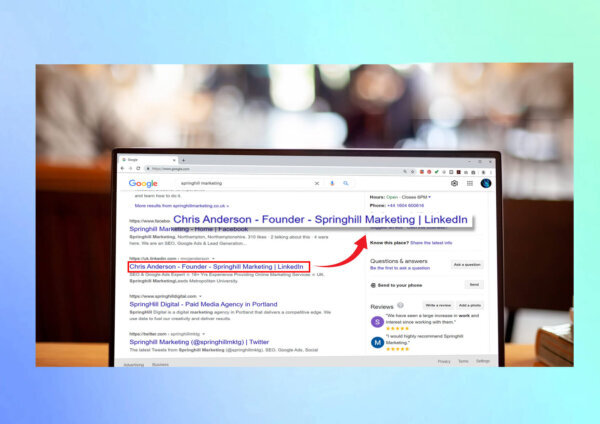SEO Title Tags: Best Practices You Should Follow
Title tags are essential elements of SEO. They help search engines understand what your web pages are all about. They also help convince your target audience to click through and visit your site. This is why it’s crucial to follow the SEO title tags best practices to achieve better search rankings and generate more visitors and leads to your site.
Title Tag Explained
As the name implies, a title tag is an HTML element that indicates a web page’s title. It is what you click on search result pages to go to a particular website after conducting an online query. Besides aiding in SEO, title tags can also help your social media efforts. Most social networking sites use these tags to identify what they should display when you share a particular webpage.
Creating Powerful Title Tags
To achieve the best results, it’s vital to create title tags optimised for humans and search engines. Follow the tips below to make SEO and user-friendly title tags.
1. Avoid long title tags
Be careful with the length of your title tags. If they are too long, search engines are likely to cut them off and add an ellipsis. When this happens, there’s a chance that essential words on your title tags won’t show up. This is why you should limit the length of your tags to a maximum of 60 characters or 600 pixels.
Also, avoid writing titles in all caps. Not only are they hard to read, but they may also limit the number of characters search engines can display.
2. Never stuff your title tags with keywords
It’s always a great idea to incorporate your focus keywords into your title tags. However, avoid overdoing it. It’s also bad practice to use titles that are just a list of keywords and their variations.
Take note that search engines understand keyword variations. Therefore, stuffing your title tags with keywords might cause Google to flag your web page as “spammy” and send you a penalty. Also, it can create a bad user experience.
3. Create a unique title for every page
To improve your search rankings, ensuring that each web page has a unique title is a must. This will let search engines know that your pages are valuable and one-of-a-kind. It can also help improve your click-through rates.
That being said, you have to avoid default title tags, such as “Home” or “Product Page.” Otherwise, this will send a signal to Google that you have duplicate content. Also, it can hurt your CTR since web users are less likely to click on a link that says “Untitled” or “New Page.”
4. Prioritise essential keywords
Here’s one of the most vital SEO title tags best practices you mustn’t forget. Make sure to place essential keywords at the beginning of your title tags. Research revealed that keywords could help boost your search rankings if they are closer to the start of your title tags. It can also help improve user experience since most people these days tend to read only the first two words of a headline.
For this reason, you should create title tags where the most unique and valuable part of your webpage appears first. If search engines were to cut off your title tags, your focus keywords would remain visible. For example, let’s say you’ve created a new product page. Its title tag should look like this: “Product Name | Product Category | Brand Name.”
5. Don’t forget to incorporate your brand
It would help if you considered adding your brand or business name to your title tags. This can help improve your CTR, especially if your brand has been around for quite some time and has a considerable following. As mentioned earlier, you should place your brand name at the end of the title tag. But in the case of your homepage or about page, consider putting your brand name in the beginning to emphasise your business name.
6. Write for humans
When it comes to SEO title tags best practices, always remember the golden rule of search engine optimisation: write for humans and optimise for search engines. Indeed, title tags contribute to your search rankings. However, your priority is to convince your prospects to click on your link.
Keep in mind that you’re less likely to pique your audience’s interest if your title tags are just a string of search terms. Therefore, always consider user experience when crafting your title tags. They should help you create an excellent first impression and entice people into clicking your link by conveying the most accurate message about your brand and product/service offering.
Always Pay Attention to Your Title Tags
Your title tags are your prospects’ first point of contact with your brand when they perform an online search. They also contribute to your search rankings. This is why it’s vital to follow the best practices when creating title tags to ensure that they are both search engine and web user-friendly. Consider the pointers discussed above to get better results.
At Springhill Marketing, our highly experienced SEO team can help you craft optimised title tags for better search results and user experience. Please get in touch with us today, and we’ll create a tailored SEO strategy just for you.
Drive Your Business Towards The Best Results.
Talk to us about how we can help.














